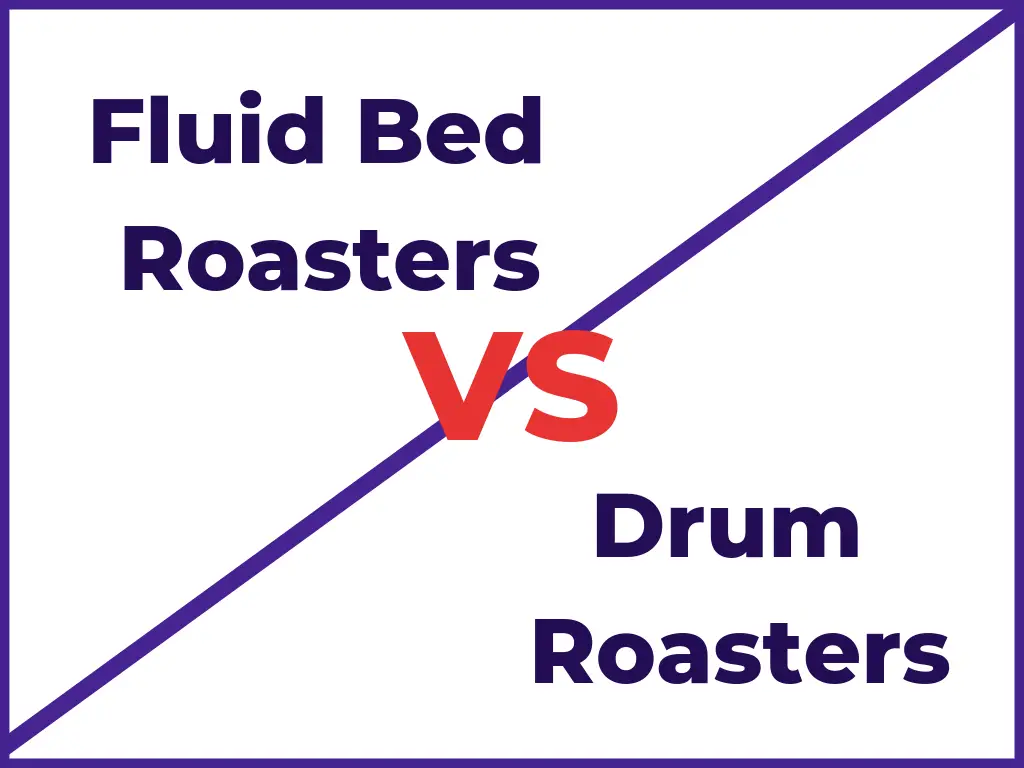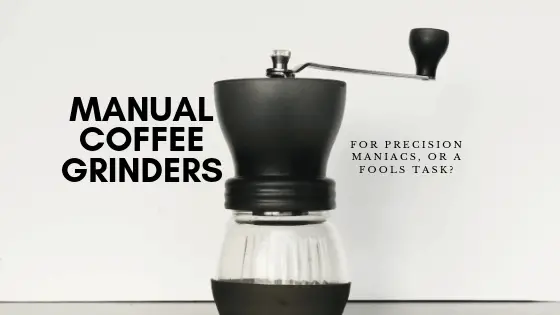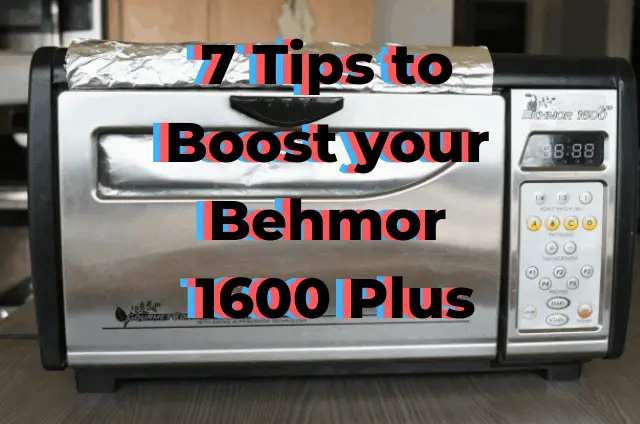If you’re not using a frying pan or a baking sheet to roast your coffee, you’re either using a fluid bed coffee roaster or a drum roaster. You may not even know it, but all coffee roasters fit into one of those two categories.
Fluid Bed Coffee Roaster
A fluid bed coffee roaster uses 100% hot air to roast the coffee beans, meaning that the coffee is solely roasted through convection.
If you roast with an electric popcorn popper, you’re roasting with a fluid bed roaster!
A heating element heats the air inside the roasting chamber, and a fan moves the air around the beans at a quick enough pace to keep the beans constantly flowing.
Fluid bed coffee roasters highlight the acidity of your coffee beans more so than drum roasters.
Benefits:
- You won’t scorch your beans. Because there’s no contact with a hot drum, your beans will roast evenly.
- Fast! Fluid bed roasters tend to roast quicker than drum roasters.
- Quieter: Most of the time, these machines are quieter than drum roasters. This isn’t too much of a problem either way for home roasters, but if you’re looking to go pro, considering the space your roaster is in is important.
Drawbacks:
- Small charges: Because the beans need to be constantly agitated, there can’t be too many in the chamber at once, otherwise they start to settle and roast unevenly.
- Difficult to control: Some fluid bed roasters offer the ability to change the air temperature, but many do not. Without this control, you are either roasting at full power, or not at all. That doesn’t leave too much room for control or for roast profiling.
Best Fluid Bed for the Home Roaster:
I’m a big fan of the electric popcorn popper for the beginner. If you’ve burned through a couple popcorn poppers and you’re looking to get something a little more robust, try the Fresh Roast SR500.
It’s a great machine with more maneuverability than a popcorn popper, and it still has all the same benefits: it’s small, and makes a delicious cup of coffee. Plus, it has different power settings so you can profile your roasts easier.
Drum Roasters
Drum roasters have been around the longest. There are hundreds of different designs for drum roasters.
Drum roasters use both conduction and convection (as opposed to just convection) for heating. That means that the drum transfers heat to the beans directly, and the hot air roasts the beans as well.
Drum roasters have longer roast times than fluid bed roasters. This helps develop the beans completely, but can damper the acidity if taken too far.
Benefits:
- More variety: there are all kinds of different drum roasters on the market.
- Less Expensive: Drum roasters are pretty mechanically simple. Because of this, they tend to be less expensive.
- More control: Because you have two heat-transfer methods, you have more control. Most machines offer some variations that allow for more control, too.
- More beans per roast: Drum roasters usually offer a lot more space for your beans. If you are comparing by price, a drum roaster at one price point will almost always roast much more per batch than a similarly price fluid bed roaster.
Drawbacks:
- Long roast times: If you load up to what most manufacturers claim their roasters can hold, you’ll run into some pretty long roast times. This can flatten out your beans and make your cup of coffee less than dazzling.
- Large and Loud: Drum roasters are usually loud and they’re usually pretty big. They almost always need to be stored out of sight.
Best drum roaster for the home roaster:
I always factor in cost when determining what the best roaster is. For my money, I give it to the Behmor 1600 Plus. Check out my review here.
This machine has plenty of drawbacks and quirks, but if you work your way around those, it gives a good amount of control over your roast and allows you to roast a lot at once. For tips on how to boost your Behmor, click here.
At a higher price point, there’s the Allio Bullet. This is probably the best home roasting machine out there, though it’s expensive. I don’t recommend it as my top for that reason. But if you’re willing to part with some cash, the Allio Bullet is superior in all manner of ways. It’s a small version of a great commercial roaster. Because of its power, you can also consider using this machine if you’re looking to sell some of your own beans in the near future.
Which should you choose?
For me, I made the jump to a bigger roaster after burning through three electric popcorn poppers. After a ton of research, I made my leap to the Behmor 1600 plus.
I chose the Behmor 1600 plus because of the larger loads it can handle when compared to the Fresh Roast SR500. However, if you enjoy roasting 2-3 times a week and don’t mind keeping up that schedule, the Fresh Roast SR500 is a great step up from the popcorn popper. You’ll feel right at home with this machine.
All in all, though, I still recommend the Behmor 1600. You can alter your roast profile in a number of ways, and you can shorten roast times with a few simple hacks. It’s a sturdy machine, and I’ve had mine for four years without it even slowing down.
What do you use?
Fluid bed fan? Drum zealot? Argue the virtue of your ways in the comments below!
For more information on roasting equipment, go here. Want to improve your roasts? Check out these resources.




